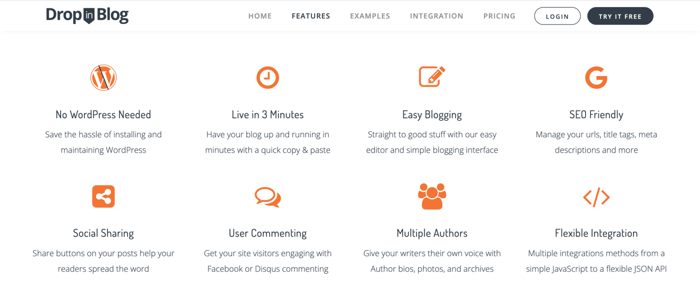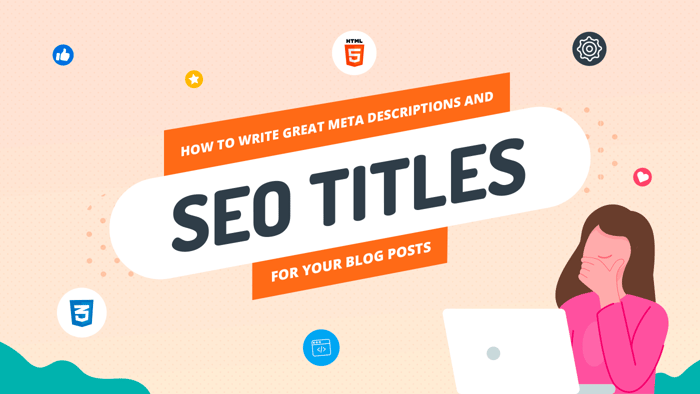Crafting great titles and writing your own meta description is an essential part of SEO nowadays. A compelling title will grab attention, and the meta description will give a little more insight into what information the blog post covers. If you want to know how to write a meta description and a killer title, keep reading.
Table of Contents
The Value of a Meta Title and Meta Description
The meta title and description are what is displayed on the SERPs. If you don’t write this yourself, the search engine will automatically generate it based on the article’s first heading and the first paragraph. However, when you write it yourself, you can ensure it’s the best possible portrayal of your post.
But there is even more value to a well-written meta description and a great title. If written well, these two things will often encourage an increase in click-through rate and boost organic traffic to your site.
Meta Title Guidelines
Your meta title needs to spark interest and curiosity – in the sea of search results, it needs to stand out. The language you use is very helpful. For example, using power words to suggest action or evoke an emotion is the secret to grabbing attention.
Interestingly, including a number in your SEO title can also be especially helpful. There’s something about how our brains process the number and text combination that is more appealing.
Some examples of well-written SEO titles include:
- “10 Best Sushi Restaurants in Sydney” – it includes a number, the word “Best” to grab attention, and the location is helpful.
- “How to Code a Website for Beginners” – using the words “How to” gives the reader a clear idea of what to expect from the article.
- “7 Ways to Run Better and Faster” – curiously, the number 7 is particularly eye-catching and is often used in listicles and how-to articles.
It should be a no-brainer that your title also needs to include your chosen keyword, but it shouldn’t be exactly the same as your <h1> title in the article itself. This gives you more opportunity to rank for keywords variations.
Lastly, your meta title must be within the character limit of 60 characters. If not, your title will not be seen completely, and you are unlikely to get the full benefit of your creatively written SEO title.
Meta Description Guidelines
The meta description doesn’t hold as much weight when it comes to ranking factors, but it’s still important. For this reason, every page on your site should have a meta description.
How do you write a meta description? As expected, you should stay within the character limit of 160 characters. Any more, and it’ll simply be cut off. Definitely include the keyword, as the meta description is particularly good for long-tail keyword searches.
Finally, make sure your meta description provides a really clear snapshot of what the content on that page is about. It can also help to see what your high-ranking competitors include in their meta descriptions.
Common Mistakes
Simply developing your SEO title and meta description and then forgetting about it is a mistake. It’s wise to do some form of A/B testing of your meta title to identify which version will give the best results.
When developing an eye-catching meta title, don’t be tempted to create clickbait. This doesn’t work well and only results in your site losing credibility. Similarly, writing misleading meta descriptions in order to draw in a reader is a bad move. Your site will most definitely be penalized for this.
Not using the maximum character limit is also a big no-no. Try to make your SEO title and meta description as close to the maximum character limit as possible. Short meta descriptions are unlikely to fully convey what’s in the content of the page and risk being replaced by something the search engine creates.
Also, don’t be afraid to go back and freshen up old content by rewriting meta descriptions. This can help make your content relevant again and get fresh traffic.
DropInBlog for SEO Success
Most blogging platforms will allow you to write your own meta description and SEO title. If not, you should definitely move to something better, like DropInBlog.

DropInBlog is a professional blogging platform that makes writing and managing your SEO-optimized content super easy. It allows you to edit your URLs, add meta tags, and insert social sharing buttons to increase visibility across different platforms. The full range of features is long, so you certainly won’t be lacking functionality with DropInBlog.

To make it nice and simple, DropInBlog integrates easily with a wide range of platforms. It even automatically adopts your site CSS, so there’s no need to spend time reformatting posts. You can try the platform for free with a trial subscription.
FAQs
Why are a meta title and description important for SEO?
In reality, the meta title holds far greater importance for SEO purposes, but that doesn’t mean the meta description isn’t also of great value. Both are visible to provide a summary of your webpage in the SERPs. If your meta title doesn’t grab interest, you won’t get clicks. If your meta description doesn’t accurately describe what’s on the page, you won’t get clicks.
A well-written meta title and meta description will encourage a user to click on your page, generating organic traffic – which is the ultimate goal of SEO.
What happens if you exceed the character limit for a meta description?
The character limit for a meta description is 160 characters. If you exceed this, your meta description will simply end at the limit. So, the entirety of your brilliant meta description won’t be seen. That’s why it’s important to stick to the character limit.
What should you include in a meta title?
First and foremost, a meta title should grab attention, but not in a clickbait kind of way. It needs to stay within the character limit of 60 characters but also give an idea of what the post is about. An extra tip – using power words and a number is very effective in a title. For example, “7 Best Bloggers to Follow.”
Final Thoughts
Including a meta title and meta description is an easy-to-do, essential part of SEO. There are a couple of things to keep in mind when developing your SEO title, including using language that grabs attention and conveys meaning. When it comes to writing a meta description, you need to focus on crafting a succinct and accurate summary of the content on the page.
Above all, always make sure your text stays within the character limit and that you include your chosen keyword for search engine success.





